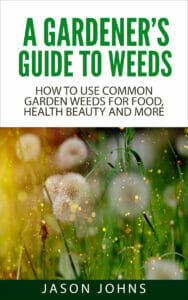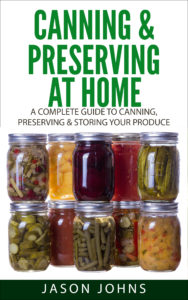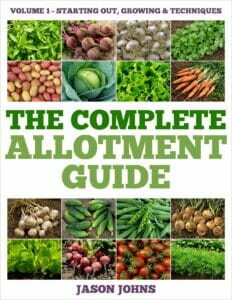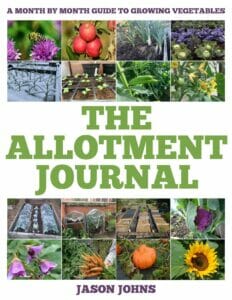It is now getting quieter at the allotment as the harvest draws to a close and the days shorten, making it harder for many people to get time to work on their allotment. The weather will be colder and winter storms will be coming in. It’s a lot of tidying up and general maintenance, preparing for next year.
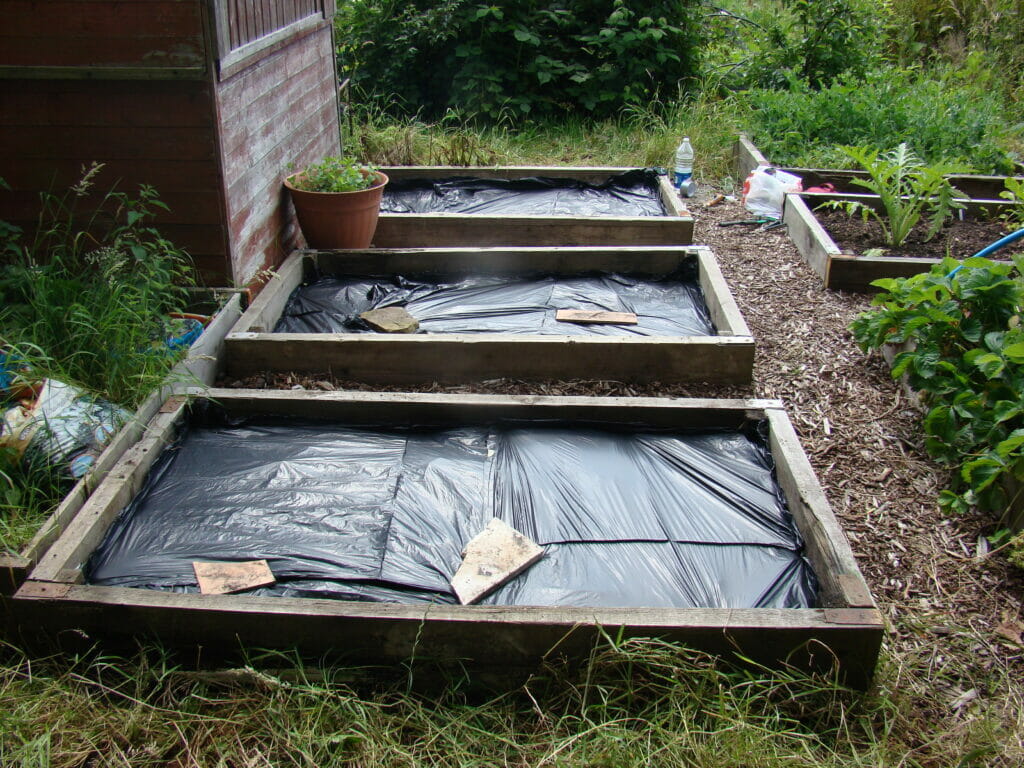
What To Harvest
There will still be some crops ready to harvest and most of what is left will be winter hardy, so there is no need to hurry and pick them. Keep an eye on the weather as if your ground becomes too waterlogged it could rot root crops. Above ground crops can suffer in high winds, so secure them as required.
- Brussels Sprouts – the young leaves at the top of each plant, known as sprout tops, can be harvested and eaten like spring greens. Sprouts taste better after the first frost, so keep harvesting them before they ‘blow’, working from the bottom of the plant to the top.
- Cabbages – autumn and winter cabbages are ready to harvest now.
- Carrots – keep lifting your carrots or leave them in the ground providing they aren’t being damaged by pests. They can benefit from a straw mulch to protect the roots from the frost and weather.
- Cauliflowers – harvest these as and when you need them. They will have stopped growing now, so unless it has gone really cold, leave them in place until you need them.
- Celeriac – dig the whole root up as and when you need them and trim them before use.
- Celery – this can be harvested this month.
- Cranberries – once the berries darken to a deep red, they are ready to harvest.
- French Beans – the beans that you have been saving to dry can be left on the plant until they dry. However, if the weather is too wet, you may need to remove them and dry them inside otherwise they could rot.
- Jerusalem Artichokes – the first of your artichokes are ready to dig up this month. Dig up what you need and leave the rest in the ground for now.
- Kale – this is an extremely hardy plant that you can start to harvest what you need now as a cut-and-come-again crop. Leave the plant in the ground and keep harvesting throughout winter.
- Kohl Rabi – most cultivars will withstand some frost, but if it gets particularly cold, protect the plants with fleece or cloches.
- Leeks – dig forks up with a fork otherwise you risk breaking the stem. Harvest what you need and keep them covered to protect them.
- Lettuces – the first of the autumn lettuces will be ready to harvest.
- Oriental Leaves – plants such as mizuna, Chinese broccoli and so on will be ready to harvest this month.
- Parsnips – keep harvesting parsnips or leave them in the ground until you need them.
- Raspberries – you may find some autumn fruiting raspberries are ready to harvest in sheltered areas.
- Salad Leaves – many salad leaves will still be ready to harvest, particularly if you protect them against the frost.
- Spinach – most spinach varieties will be harvestable this month, though protect this crop in bad weather.
- Sprouting Broccoli – pick any spears that are left before harvesting the hardier varieties next year.
- Swedes – if the roots are not too large, they can be left in the ground, otherwise you can harvest them.
- Swiss Chard – these are a hardy plant and will keep cropping throughout winter. Harvest leaves from the outside as and when you need them.
- Turnips – if the ground is going to freeze, lift the turnips and store them for use over winter.
Vegetable Plant Jobs
There isn’t a huge amount to do in the vegetable garden this month as there is very little sow. Mainly it is about removing established weeds, tidying up and preparing for next year while keeping out of the bad weather.
- Brassicas – net your brassicas to protect them from pigeons who will strip the leaves as there isn’t a lot of other food for them.
- Broad Beans – overwintering varieties can still be sown now either directly or in a cold frame.
- Cauliflowers – bend leaves over the heads and tie them in place to protect them from potential frost damage.
- Garlic – garlic cloves are best planted this month. Although you can plant them in December, the ground is often too hard or wet.
- Globe Artichokes – mulch the crowns with straw or bracken to protect them from frost damage over winter.
Fruit Tree/Bush Jobs
November is one of the main months for planting bare root fruit trees and bushes as they have a little time to establish themselves before winter sets in with a vengeance.
- Apples – start winter pruning apple trees once the leaves have fallen and the tree becomes dormant.
- Bare Root Trees – plant bare root cherries and plums between now and January and bare root apples and pears between now and March. November is considered the best time to plant bare root trees, particularly in areas where the ground freezes solid.
- Blackberries – plant bare root canes now, ideally in holes with plenty of well-rotted compost dug in.
- Currants – plant bare rooted plants. Blackcurrants can be pruned, opening up the bush so that air can circulate. Remove weak, diseased or older branches.
- Figs – any unripe figs larger than a cherry should be removed. Leave the tiny, embryo figs in place as they will be next year’s fruit.
- Fruit Cages – remove the nets from your fruit cages to allow birds in so they can eat pests and their eggs. Removing the nets also prevents heavy snow or high winds damaging your cages.
- Gooseberries – continue to plant bare rooted plants. Prune established plants, cutting away damaged, diseased, dead or crossing branches.
- Grapes – bare rooted vines can be planted this month, otherwise it is best to wiat until next March to plant them. Vines can be winter pruned from this month until January.
- Pears – when the leaves have fallen and the trees are dormant, start pruning the trees.
- Raspberries – bare root raspberry plants can be planted.
- Rotten Fruit – remove rotten fruit from your fruit trees. This is best destroyed rather than composted.
- Rhubarb – this is dormant now, so new sets can be planted or established plants divided and propagated. Spread well-rotted compost around the stems to feed the plants, but do not cover the crowns.
- Weed – weed around your fruit trees and bushes, then apply a good mulch.
General Jobs
There are a lot of other jobs to do, but mainly it is tidying up and preparing for next year. It’s not the time of year when you want to spend hours outside, so get out when you can.
- Improving Soil – now is a good time to dig in well rotted compost and manure to improve your soil. It can be spread on top of the ground and the worms left to pull it down into the ground.
- Leaf Mould – continue to gather fallen leaves to make leaf mould. Put them in cages or bags so they don’t blow away.
- Lime – before the soil become too wet, apply lime to any areas of your allotment that need it. Avoid adding lime at the same time as you add manure because they react with each other.
- Raised Beds – if you have raised beds, top them up with compost or manure as the soil level does drop over time. If you are not planting until late spring, you can fill the beds with fresh manure and cover them so it breaks down over winter.
- Tidying – remove any debris and other odds and ends from your growing area so that the plot if clean and tidy. This reduces the possible places that pests such as slugs and snails can overwinter.
Greenhouse and Polytunnel Jobs
The greenhouse will be quiet this month as most plants will be finished. Tomatoes are unlikely to still be fruiting unless the greenhouse is heated and chillies will have either died or you will have cut them back to overwinter them.
- Cleaning – scrub down your greenhouse staging, glass and framework if you haven’t already done this.
- Herbs – potted herbs such as chives and parsley should be brought into the greenhouse overwinter so you can continue to harvest them.
- Insulation – if you are overwintering plants in your greenhouse, insulate it with bubblewrap. Tape this to the inside of the windows and doors, then remove it next spring when the weather warms. This helps to keep the greenhouse frost free over winter and protect tender plants.
- Pests – check your greenhouse regularly for overwintering pests and treat them appropriately.
- Rocket – leafy vegetables such as rocket can be sown in trays and grown in the greenhouse to be harvest over winter.
- Tidy – remove spent plants from your greenhouse and compost them.

